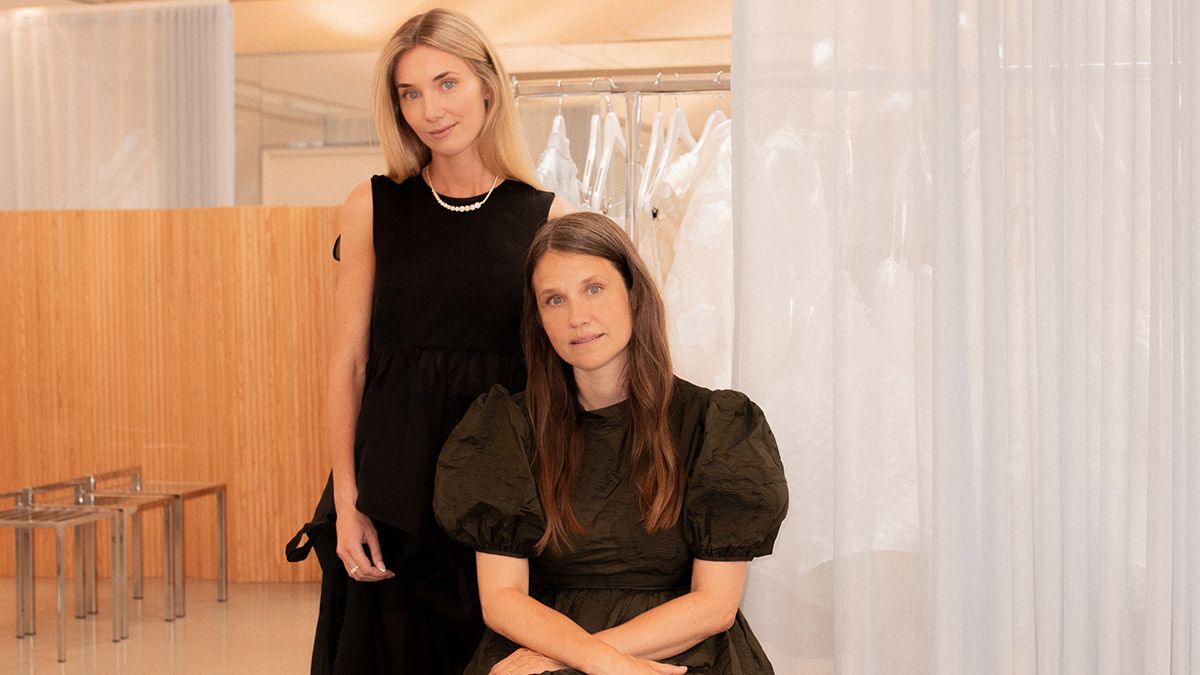The US is Cecilie Bahnsen’s biggest market, representing 20 per cent of the business, which exposes the brand to Trump’s tariffs. Fortunately, 100 per cent of manufacturing takes place in Europe, mainly across Italy and Portugal, so it’s facing the lower end of tariffs at 15 per cent. Nonetheless, it’s a challenge. “There’s a lot of strategic considerations around: do we take the margin hit on our side, or do we push it towards consumers?” Ejdrup says. “We’ve decided to take the hit on our side and not increase our prices significantly in the US, but obviously it comes at a price.”
Read More
Where tariffs stand now
On 1 August deadline, Vogue Business breaks down tariffs by country and what the rates mean for fashion.
Japan has been a challenging market for major luxury groups in the last quarter, after a major tourism spike following the crash of the yen last year caused a tough comparison. While tourism has normalised this year, Cecilie Bahnsen didn’t see the initial tourist sales spike, so growth has remained positively stable for the brand. Japan represents 17 per cent of the business, Ejdrup says.
Developing new categories
Bahnsen has started to diversify her assortment via some successful collaborations over the last five years, which the brand uses to test and develop new categories.
Its ongoing Asics sneaker collaboration launched in 2022 has been hugely successful, with every drop selling out across the majority of styles. Ejdrup recalls a recent trip to Tokyo for an Asics x Cecilie Bahnsen pop-up: “Cecilie is like a rockstar there, people queued all night and camped to meet her and get the [product].” Bahnsen has also collaborated with Mackintosh on coats (2020) and The North Face on bags and outerwear (2024). These tie-ups represent 15 per cent of the business, Ejdrup says, and she and Bahnsen want it to stay that way going forward. But they’re keen to develop additional categories in-house based on their learnings, to keep developing the design and offering the Cecilie Bahnsen consumer a fuller wardrobe.
“It’s an important part of growing up as a more emerging brand,” Ejdrup says. “You’re more dependent on partners for a lot of reasons — for production, for marketing. But as you grow up and mature, and it’s more established and you become more financially independent, I think it’s important to also look at doing some of these category extensions on your own.”
All staff, including Bahnsen and Ejdrup, will do shifts in the store on rotation, to get closer to the customer, Ejdrup says. “I think it’s so important that every single person in this team knows who our consumer is. I think maybe we haven’t been good enough — I think it’s definitely something where we can evolve.”
Both Ejdrup and Bahnsen see the store as a creative studio to test new ideas. “We can learn a lot from it,” Bahnsen says. “I’m excited for the team and I to be closer to the customer, to get their feedback, to understand how they live and what memories they have of the collections. We’ve done so many pop-ups — but now, we have built a universe.” Today’s show is set to be a snapshot of that universe, as Bahnsen embarks on her next decade.
Comments, questions or feedback? Email us at feedback@voguebusiness.com.
More from this author:
Anne Sofie Madsen is Copenhagen’s most established new talent
Copenhagen Fashion Week cheat sheet: Spring/Summer 2026
What JW Anderson’s rebrand says about the future of luxury
